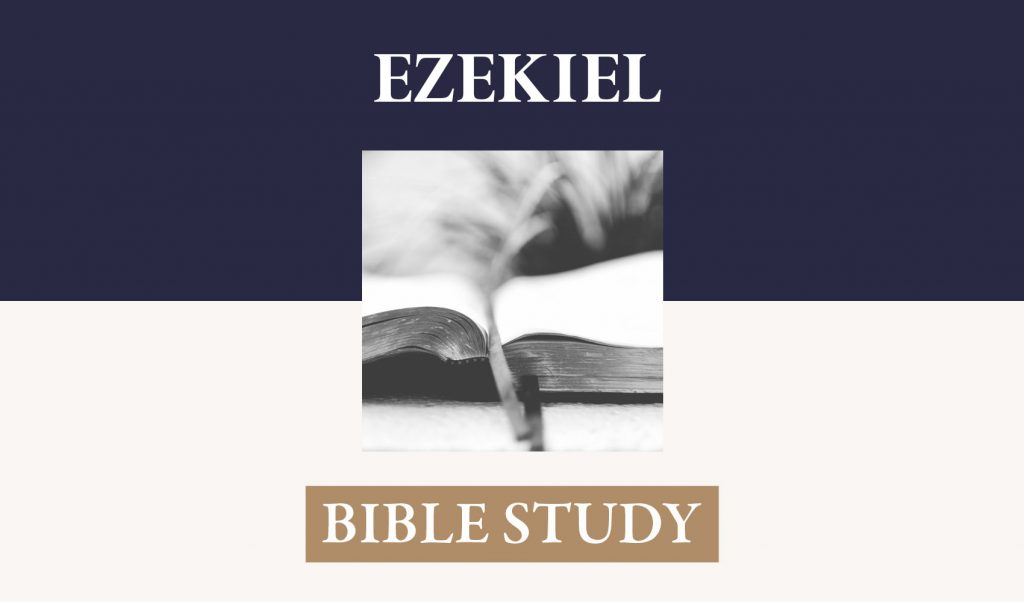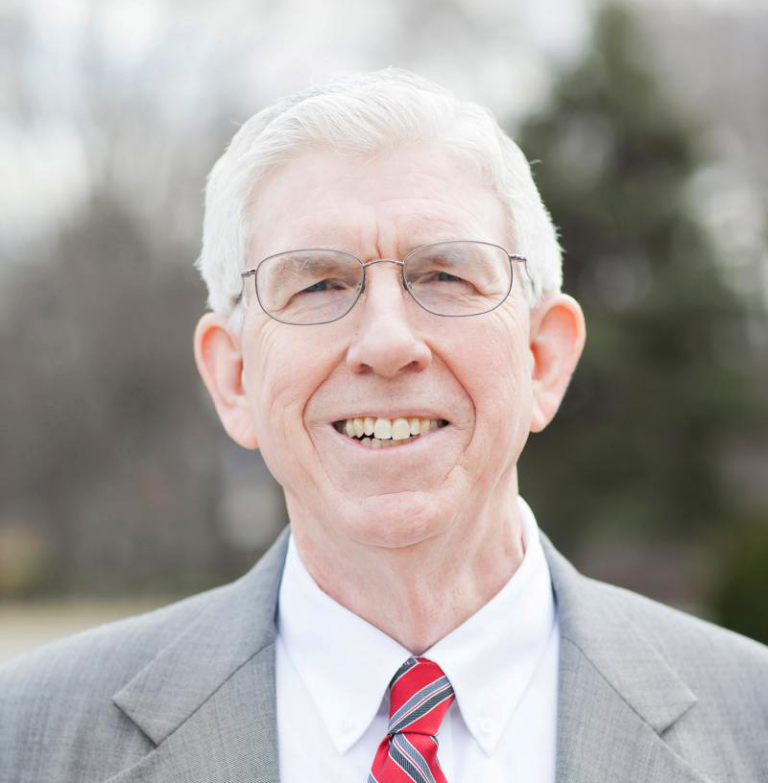I. Ezekiel is placed in the middle of an eerie valley in the midst of lifeless bones (1, 2). The hand of the Lord took Ezekiel to the Valley of Dry Bones. This is symbolic of the thoroughly incapacitated state of the people that it represents–immediately the scattered people of “the whole house of Israel” (11), eventually the elect sons of Adam scattered throughout the nations. These were not even skeletons with a recognizable form, but individual, isolated bones. They had no framework upon which anything representing a whole man could be placed. The bones were “very many” and the bones were very dry” (2).
- God asked Ezekiel if such bones—no form, no order, no life—could live.
A. Ezekiel could have answered “No” without hesitation given only the natural circumstances. The bones had no connections to each other. They possessed no internal vital organs—no heart to pump blood or blood to pump nor lungs to inhale and exhale—nor external protective coating of the body’s largest organ, the skin. They had been alive, but now were remnants of a life gone; do the dead live again in their bodies?
B. But Ezekiel had heard of God’s giving a heart of flesh for a heart of stone and heard the promise that a famished land would spring forth like Eden (36:26, 35). Wisely, Ezekiel deferred to the Lord himself for an answer. God alone could give Ezekiel understanding of what this vision of a valley of dry bones was intended to convey. If God would move a stone heart to make way for a heart of flesh, then God could breathe life and all its constituent elements into very dry bones. So, Ezekiel deferred to the omniscient one whose omniscience rides the wave of his omnipotent and eternal decree: “O Lord God, you know” (3)
God now gives an outrageous command, completely bizarre on the face of it. He told him to prophesy to the bones.
A. There was not a bone that Ezekiel did not know to be dead, for when he was taken to the valley, he also was caused to “pass by them all around” (2).Even so, by the consistent revelation of Scripture, each preacher can know with revelational certainty what Ezekiel knew with empirical certainty, “Those to whom I have been sent to preach are dead.”
B. Prophesying to bones seems a strange event, but is the consistent phenomenon in Christian ministry. Christian preachers on a regular basis prophesy to lifeless entities at all different stages of preparedness for life. Always there are some that have no clue concerning the reality of God, his judgment, the nature of divine revelation, the perversity of sin against the Creator, and the provision of redemption in Christ. Preaching brings such utterly, and dangerously, ignorant unbelievers into a form fit for the expression of life. Nothing can be done absent the creative power of God, but also the appropriate means of establishing a faithful and obedient people is the proclamation of the truths that God has revealed and that are the power of God unto salvation. “Say to them, ‘O dry bones, hear the word of the Lord’” (4).
C. Bones, Sinew, and Flesh come together.
-
- Note that the preaching included clear statements of divine sovereignty, undeniable assertions that that effectual, determined, working of the Spirit must be present for the bones to be the support system of new life. “I will cause breath to enter into you, . . . I will put sinews on you and bring flesh upon you, cover you with skin and put breath into you” (5, 6). All of the “I wills” of God preceded the promise, “You shall live” (5). Not only is this true for the reality of salvation, but it must be preached. Self-confidence or a sense of dependence on human will are deadly to saving faith and must be slain with the clear proclamation that even when we were dead in trespasses and sins, God, being rich in mercy, made us alive in Christ.
- Preaching has the effect of putting substance on the form. Hebrews 11:6 indicates that certain pivotal ideas must be present before saving faith can be present. “And without faith it is impossible to please him, for whoever would draw near to God must believe that he exists and that he rewards those who seek him.” In Romans 10:14, Paul asks, “But how are they to call on him in whom they have not believed? And how are they to believe in him of whom they have never heard? And how are they to hear without someone preaching?” Before the Colossians received the gospel in a saving way, they were taught it, they heard it and understood it, and learned it. Some may criticize the Puritans for their doctrine of preparation, but Ezekiel was thoroughly impressed with the numbers of events that had to precede the giving of the living breath to such radically fragmented persons.
- Each person goes through this process in salvation. The framework of the gospel shapes a person’s mind with truths necessary prior to the exhibition of faith. With some their time of instruction is long and grueling and might involve periods of resistance and resentment and self-righteous indignation. So it did with the Apostle Paul. With others the process is rather quictly done as with Cornelius, the Philippian jailor, Lydia; and with some it is the result of a lifetime of loving training, instruction and admonition as with Timothy, but the pattern set in Ezekiel always is discernible.
- This prophecy is applicable to individuals, because any national subordination to the Gospel will involve this individual process multiple times. So, there is a dual idea in mind here; Ezekiel looks both to individual conversion, but does so on a massive scale in which the “whole nation” of Israel is framed and fitted in such a way.
D. God told Ezekiel to prophesy to the Breath. Not only does a gospel minister preach the sinner’s dependence on God’s will, now he recognizes his own dependence in the act of preaching. “Come from the four winds, O Breath, and breathe on these slain, that they may live” (9). Conversion does not come through the persuasive words of man’s wisdom, but by the Spirit. With the preparation complete in each of the individual cases, now the breath must come. In the process of prophesying again, the breath came from the four winds and these reconstituted corpses lived. “The wind blows where it wishes” (John 3:8) This is one of the views of conversion that Nicodemus should have understood when Jesus told him that he could not see the kingdom of God unless he were born again. When Nicodemus seemed incredulous at the suggestions, Jesus responded “Are you the teacher of Israel and yet you do not understand these things?” (John 3:10) “That which is born of the flesh is flesh, and that which is born of the Spirit is spirit.” (John 3:6).
E. The bones are the “whole house” of Israel – When all the individuals that constitute the elect people of God are converted, then the “whole house of Israel” has been the recipient of this life-giving Spirit. This was not fulfilled in the restoration of the people from Babylonian captivity, for (1) not all of Israel returned, (2) they immediately began the same process of unfaithfulness (See Malachi), (3) they were again displaced from the land and were eventually ruled by Caesar, not David, and (4) they were driven out and dispersed again at the destruction of the Temple in 70 AD. There will again be a special work of God among ethnic Jews, but it will not be without the continued operation of the Spirit unto conversion among Gentiles. (Romans 11:25-33).
-
- Israel is in despair because it seems that the promises to Abraham, Isaac, and Jacob have been broken by God and they are “clean cut off.”
- God Himself will perform this work just symbolized and from death God will give new life.
- God will restore them to the land in a regenerated condition (“I will put my Spirit within you”).
- Their knowledge of God in all of his perfection and power will then be complete, for God Himself will make it certain. Verse 14
II. The Unity of the People (15-23) Ezekiel is told to enact another parable.
A. He is told to take two sticks and write on them, “For Judah” and “For Joseph.”
B. Then he is to join these two sticks into one stick. – The Northern kingdom, (called Ephraim) in this emblematic action, was in the process of being corrupted during their captivity. They constituted the hated Samaritans. Not only were they ethnically-compromised, they had a truncated canon, and a falsely-conceived practice of worship (John 4:20-22). In many respects, they were no better than the Gentiles, in fact, one element of the Gentile world as perceived by the Jews.
-
- John 4 records the conversation of Jesus with a woman of Samaria and the conversion of virtually an entire city to embrace the Messiah (John 4:39-42; note that the Samaritans considered Jesus as the “Savior of the world” that is, of people beyond the boundaries of ethnic Israel.) In this union, therefore, the people of the King are one nation, though they come from every tongue, and every tribe, and every nation.
- When the Jews wanted to give the ultimate insult to Jesus they said, “Are we not right in saying that you are a Samaritan and have a demon?” (John 8:48). Indeed, as Savior of the world and as the ultimate Ezekiel who has joined both sticks, he could be seen as a Samaritan but completely demonless. He embraces the Samaritans as one with Judah and united by him under one rule. As King of the Jews, he is King of the Samaritans.
- Jesus illustrated that a Samaritan could have a greater sense of righteousness than the ceremonially strict but hypocritical Jew. In a sense, Jesus lays claim to being a Samaritan. In the parable in Luke 10, Jesus is himself the gracious, self-giving Samaritan that binds up our wounds. He pours in healing balm and oil as the giver of the Spirit. He, this good Samaritan, saves us. He pays the price completely, sure that nothing of the debt remains (Luke 10:35).
- The people of God, the one people, shall, therefore, be those that are redeemed by the one king whether of Judah or of Ephraim (typological of all the nations). While it refers in part to the redemption of the remnant of Israel, the one-people-from-two-sticks image represents the church. Ephesians 2:11-22 is a vivid description of the work of Christ in reconciling the two peoples of the world by the cross. “I will put them with it, with the stick of Judah, and make them one stick, and they will be one in my hand. … “For he himself is our peace, who has made both one, and has broken down the middle wall of separation …to create one new man from the two, … and that he might reconcile them both to God in one body through the cross” (Ezekiel 37:19; Ephesians 2:14-16), The two nations have been put into one body, a dwelling place for God by the Spirit. “No longer two nations, and no longer divided into two kingdoms” (22).
- This appears to be the argument of Paul in Romans 9 and 11. “For not all who are descended from Israel belong to Israel.” Romans 9:6; “Though the number of the sons of Israel be as the sand of the sea, only a remnant of them will be saved.” Romans 9:27; “Has God rejected his people? By no means, for I myself am an Israelite.” Romans 11:1; “Even so then, at this present time there is a remnant according to the election of grace” (Romans 11:5). “Israel failed to obtain what it was seeking. The elect obtained it, but the rest were hardened” (Romans 11:7). “For if their rejection means the reconciliation of the world, what will their acceptance mean but life from the dead?” (Romans 11:15). “A partial hardening has come upon Israel, until the fullness of the Gentiles has come in. And in this way all Israel will be saved” (Romans 11:25 f.).
C. He will cleanse and purify them, and they will not be susceptible to backsliding (23).
-
- In fulfillment of verse 23, “They will no longer defile themselves with idols,” Revelation 21:3 announces “Behold the dwelling place of God is with man. He will dwell with them, and they will be his people, and God himself will be with them as their God.”
- Ezekiel said that they will be cleansed from “their detestable things” and Revelation 21:27 pictures the New Jerusalem as a city into which “nothing unclean will ever enter” nor anyone that does “what is detestable or false.”
- Revelation 22:3 shows this fulfillment of Ezekiel’s enacted parable by describing the eternal dwelling as a place where “there is no more curse, but the throne of God and of the Lamb shall be in it and his servants shall serve him.” Ezekiel said, “I will deliver them from all their dwelling places in which they have sinned, and will cleanse them. And they will be my people, and I will be their God” (23).
III. The Eternal Reign of David over them. – 24-28
A. Verse 24, 25 – David reigns without rival and with no end. This clearly refers to Jesus who was “descended from David according to the flesh” (Romans 1:3). Peter in the first Christian sermon identified Jesus with that David that would reign forever (Acts 2:29-36). In Revelation 22:16 Jesus identified himself as the “root and descendant of David, the bright morning star.” He is both David’s Lord as well as his descendant. He is called, “My servant David,” (24) peculiarly in his atoning work. In this he came to do the will of his Father (John 6:38, 39; Philippians 2:8) Jesus is the “one shepherd” (John 10:11).
B. Verse 25 – The land is forever – The men and women of faith in Hebrews 11 did not identify the promise with the land to which Abraham was led. He and Isaac and Jacob were “looking forward to the city that has foundations, whose designer and builder is God.” (11:10). They “were strangers and exiles on the earth” and were looking for a “better country, that is, a heavenly one.” Because of their faith “God is not ashamed to be called their God, for he has prepared for them a city.” (11:13-16). They will be given the “kingdom that cannot be shaken” (Hebrews 12:28). This is the true and final fulfillment of the “land that I gave to Jacob my servant” (25), given penultimate fulfillment in the return of the exiles to Israel, but never the final mark of “David my servant will be their prince forever” (25). Only the land truly sought by Abraham will match Ezekiel’s message of peace.
C. Verse 26 – They will live under the provisions of a Covenant of Peace (26) that is everlasting. According to Hebrews 12:22,24, they have come to “Mount Zion and the city of the living God, the heavenly Jerusalem . . . and to Jesus, the mediator of a new covenant, and to the sprinkled blood that speaks a better word than the blood of Abel. Abel’s sacrifice, though given in accordance with divine command and example (Genesis 4:4) could never take away sin but was fulfilled in the atoning, reconciling work of Christ]. Christ’s blood is the covenant of peace [Ephesians 2:14, 15, and Colossians 1:20]
D. God’s dwelling place will be with them –– Ezekiel 37:27 “My dwelling place shall be with them, and I will be their God, and they shall be my people.” This clearly is not fulfilled until we read the words of Revelation 21:3 – “And I heard a loud voice from the throne saying, ‘Behold, the dwelling place of God is with man. He will dwell with them, and they will be his people, and God himself will be with them as their God.”





















